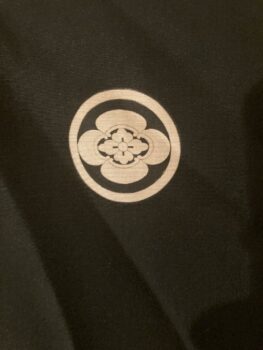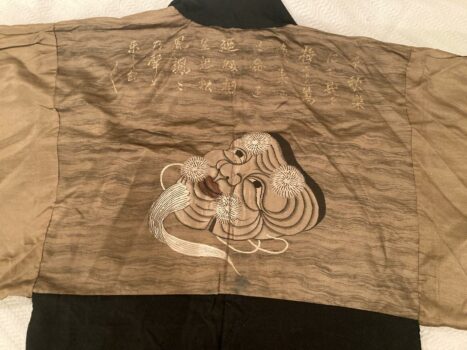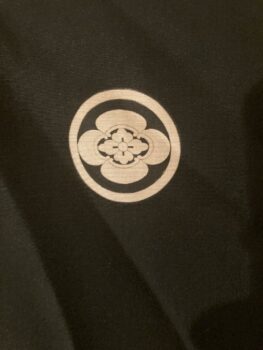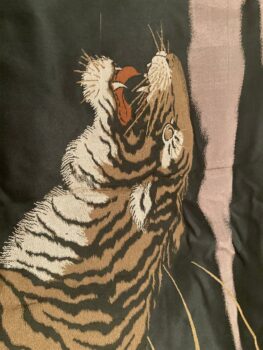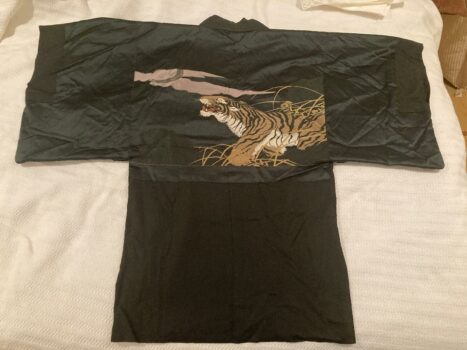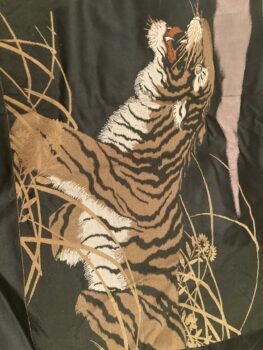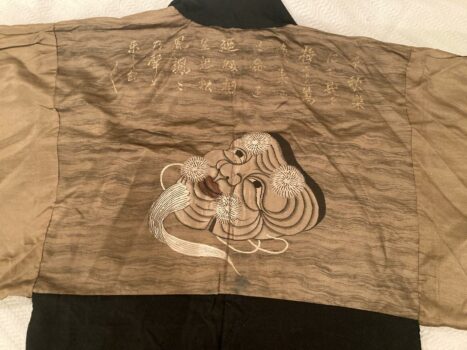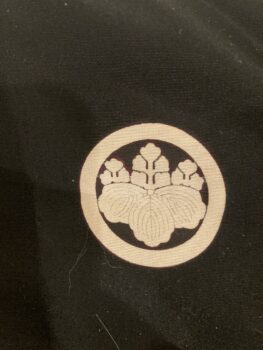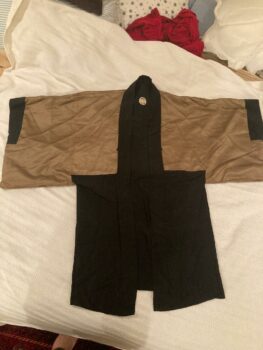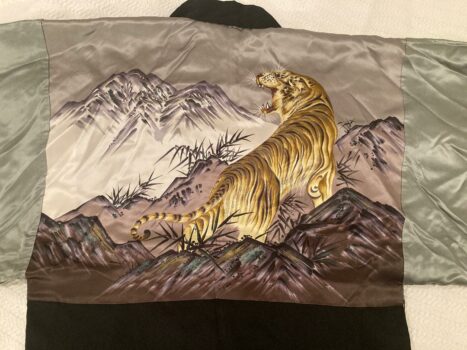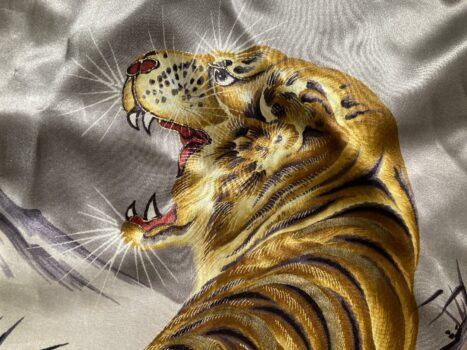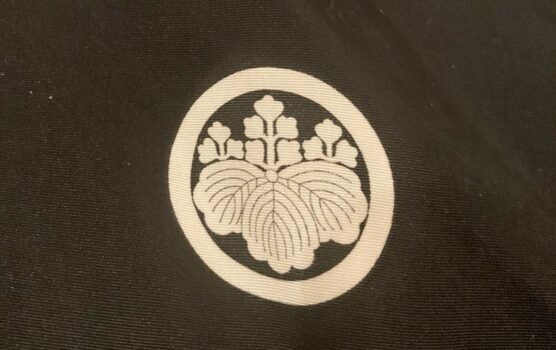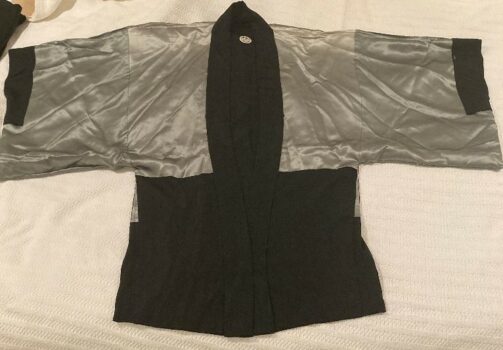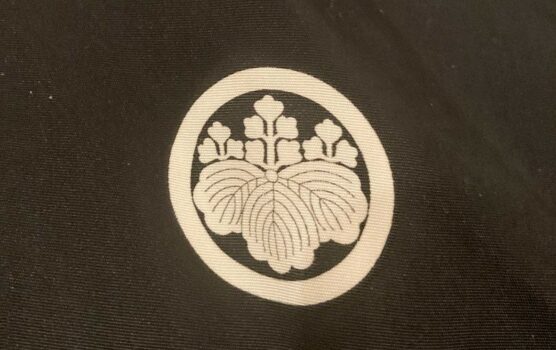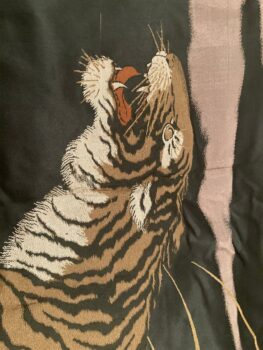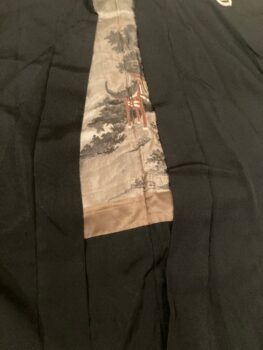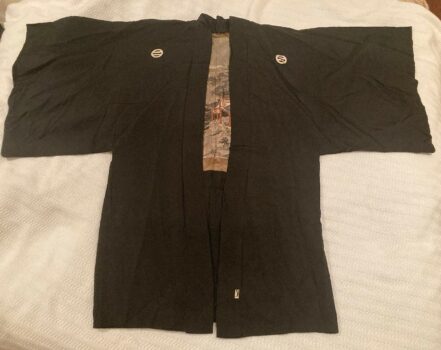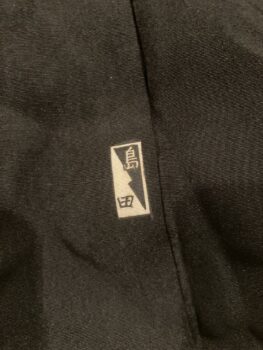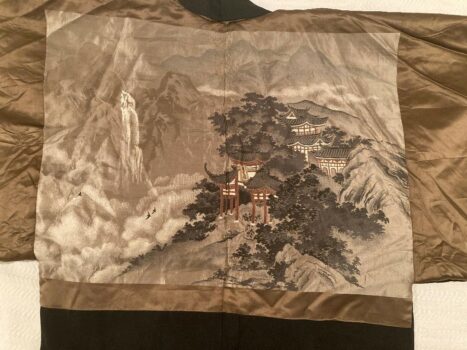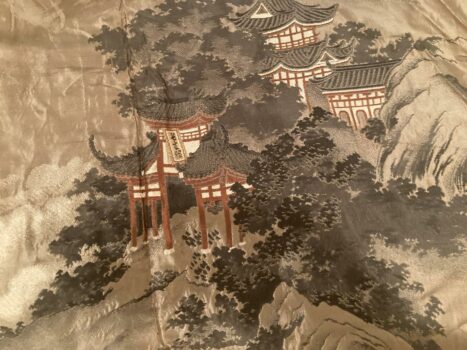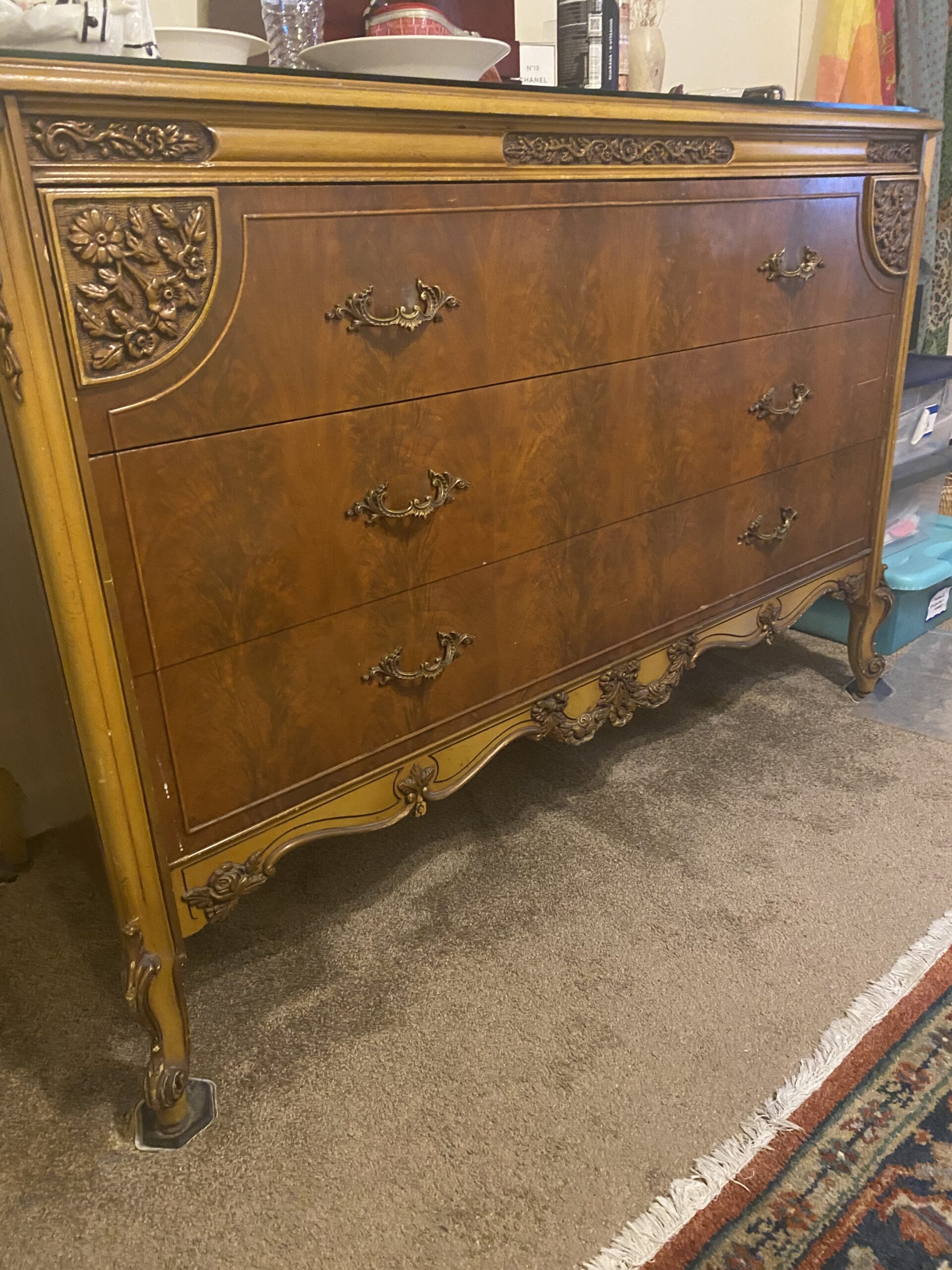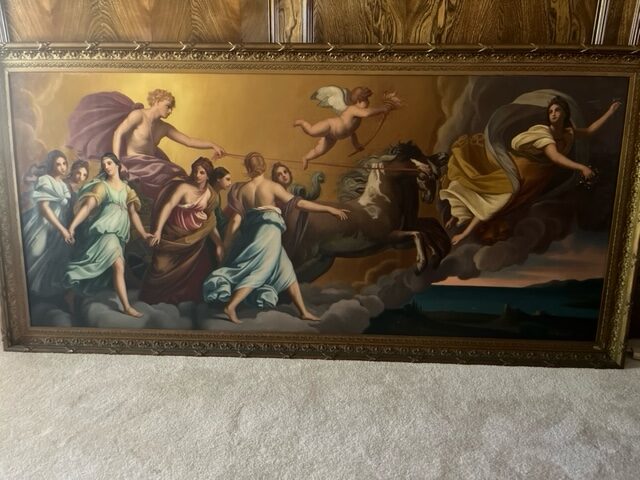An Original Hand Made Haori Jacket from circa mid 20th Century
This is a professional appraisal report for this item provided upon request. It contains a detailed description and evaluation. This document also includes information about how to sell your item and about the valuation method we’ve used. Keep in mind that the appraisal value is only applicable to this particular unit and should NOT be understood as a general valuation. It is very important to understand this, as values can range from 100 to 100K depending on subtle details.
This report is designed to give you an appraisal value for the items you own, whether it is furniture, china, glassware, or other types of antique or collectible items. The information provided will help you to understand your piece and its value. It also provides an appraisal value in US dollars, as well as how to sell it. This report is not intended to encourage you to sell your antique; rather it aims to provide information on your antique’s value so that you know what steps to take if you do wish to sell.
Description and history
This is a set of circa mid 20th Century Hand Made Haori Jacket.
Identification
The haori jacket is a traditional form of garment worn by Japanese men over their kimono. Originally, the haori was made from a thick, cotton material and was typically only worn by the elite classes of society. By the 19th century, the haori had become more widely available and was made from a variety of fabrics, including silk. Today, the haori is still a traditional part of Japanese culture and is typically worn over a kimono as a form of formal wear.
We can see the family crest in all of them. The family crest is a crest that has been passed down from generation to generation in the family and is placed on the black Tomesode, Irotomesode, and Homongi. There are four types of family crests: five crests, three crests, one crest, and no crest. The number of crests indicates the prestige of the kimono, so there is no such thing as no crests on Tomesode, which are formal wear. It is common to put five crests on a black Tomesode, which has the highest prestige, and three crests on Irotomesode, which has the next highest prestige.
Provenance
The haori is a hand-sewn garment, making each piece unique and one of a kind. The traditional haori is usually mid-length and loose fitting and is usually decorated with intricate patterns, designs, and embroidery. The haori is a versatile piece of clothing and can be worn as a garment, or it can be used to add a unique touch to the interior decor of any home. The haori is a timeless piece of clothing and is a great way to show respect for the traditional Japanese culture.
The haori jacket is a traditional form of garment that has been worn by Japanese men for centuries. It was traditionally worn in the aristocratic classes of Japan, especially in areas such as Tokyo, Kyoto, Osaka, and Kobe. Today, the haori is still worn in these regions and is considered part of the formal wear. In recent years, the haori has become popular in other areas of Japan, such as Hokkaido, Shikoku, and Okinawa. In addition, the haori is popular outside of Japan, with many people wearing it as a fashionable statement.
Age
This Haori Jacket is from circa mid 20th Century.
Style
Haori jackets come in a variety of styles, from the simple and classic, to the bold and modern. Traditional haori are often decorated with a monochrome pattern, while modern haori can feature more intricate embroidery, featuring vibrant colors and patterns. The embroidery is usually done with silk thread, and can be a great way to add a unique touch to the jacket. The haori jacket is a timeless piece of clothing and is a great way to show respect for the traditional Japanese culture.
In this case, this is a circa mid 20th Century modern Haori.
Similar items used for comparison
Appraisal Value ($)
$300-350 each.
Appraisal Report made by:
Andrés Gómez
BSc, MSc, Expert Art Appraiser
10+ years of experience in online antique and collectible appraisals.
100k+ Customers Served.
Antique Store Owner.
You can check my portfolio of past appraisals here:
https://www.appraisily.com/andres-portofolio/
Signature:

We have Experts online now.
Pictures received.
How to sell it
Antiques, art, and other collectibles are difficult items to sell online. Selling antiques can take a lot of time. Be patient, but also make sure that the price you are asking for is the right one for your pieces of art. Consider the following tips on how to sell antiques and collectibles online: These tips will help maximize the price of your antique or collectible.
I would recommend selling it online. There are many ways to do this. For instance, Post an ad on Craigslist. Use eBay to sell antiques online. Post a listing on the Etsy marketplace. Sell with direct messages using Instagram. You can create a website using Squarespace or WordPress. Use Shopify to sell via a website, POS and social channels. List your items on Bonanza.com, Facebook Marketplaces, or Amazon Marketplaces. If you don’t have time, I would recommend starting with Facebook, Etsy, and Amazon.
The key to selling antiques online is to let potential customers know that you know what you are talking about. It’s much more difficult to sell something when the potential buyer can’t be sure it’s authentic. Sellers should use a well thought out descriptive guide like this one. A good lead generation service should be helpful in establishing these relationships with online buyers, and an effective way to do this is through classified ads. If a buyer asks for more information, giving them some valuable facts well ahead of time will get you more sales because your reputation will increase and real customers are the ones who ask for more details.
In order to sell your antiques online, you will need to create a profile on the relevant forum (Etsy, Amazon, and FB). Make sure you add a high-resolution image of the product (include at least 3 detailed photos) and add some text. The text should be informative and straight to the point; nothing fancy or fluffy.
Asking price is a big factor in selling your antique. If your asking price is too high (fancy company stickers, missing parts, or chipped paint), you are unlikely to get many bids. If the asking price is too low, it will cost you money for repairs, shipping, and insurance. As a general rule, I would recommend setting an asking price that is 80% of the value of this report, so you will make the listing attractive from the beginning.
About the valuation method
This is a detailed report of the value of your piece. To determine the value, the appraiser has considered the results from past auction sales. Keep in mind that the final price can be different from the asking price that you can find on the internet. You can see ads on the internet with different asking prices. However, a very high asking price doesn’t normally find cash from a buyer.
That’s why our method comprises searching and comparing similar past sale results that had a buyer. That’s why we can provide an accurate estimation of this item.
To get an accurate valuation of your antique piece, I considered the following: description, condition, and possible precious metal content. History, age, provenance, and the importance it has played in history are also considered. A crucial interest is a collector’s willingness to buy this piece. While some antiques are really collectible, others are really difficult to sell, and hence their value decreases.
Antiques can be a good investment. A piece’s year of manufacture, condition, rarity, and history can all influence an antique’s value.Antiques, when bought wisely and carefully, can provide many good years, even decades, of enjoyment before their value appreciates significantly. Antique furniture, paintings, prints, and maps are not only useful works of art but also tangible assets. Their value in the market increases every year, making them great long-term investments for people who want to diversify their assets.
